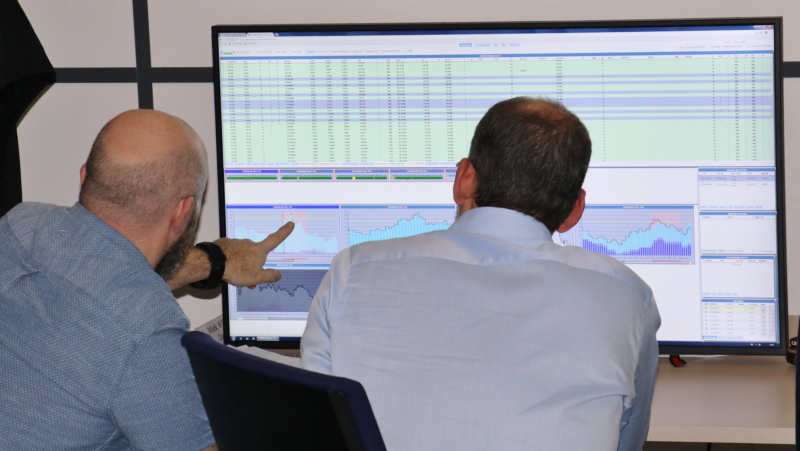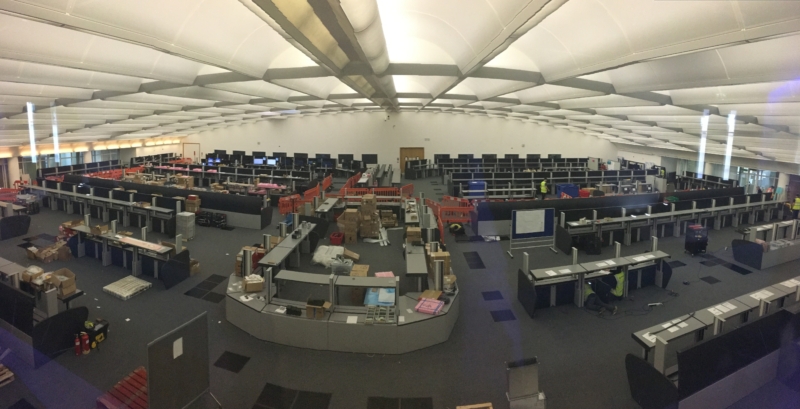The European Airspace Challenge
11 September 2019The summer of 2019 has been record breaking across the European aviation network with a record 37,228 flights handled on 28 June. And the European ATM community has been standing shoulder-to-shoulder to deliver efficient and effective air travel during the region’s busiest period.
What’s more, this high demand for airspace capacity is set to persist throughout the year, with CANSO members experiencing increases in traffic from 3% to 13%, depending on the air navigation service provider (ANSP).
The challenge is not only the unprecedented increase in demand, but also that for some airspaces, it was unexpected.
Variance between actual and forecasted air traffic growth in Europe is in the range of 0.5% to 35%. This presents a challenge to an industry where significantly increasing capacity can take several years due to the long lead-time needed to train air traffic controllers; and where the focus in recent years has been on reducing costs while maintaining high safety standards.
So how is the air traffic management (ATM) industry addressing this challenge and what lies ahead?
Creating capacity in Europe
In response to this rapid growth in air traffic, CANSO – the global voice of ATM and industry association – and its Members have announced a range of measures to improve airspace capacity and reduce delays across the region in the short and longer term.
CANSO members, including NATS, DFS, ROMATSA and PANSA, have been providing detailed insight into these developments and illustrating how ANSPs are managing record traffic levels efficiently, effectively and safely.
For example, to address bottlenecks, ANSPs in coordination with the Network Manager have deployed a collaborative airspace coordination initiative between area control centres to deliver optimum traffic flow solutions at a network (regional) level, rather than individual ANSP (State) level.
On an organisational level, NATS is a good example of an ANSP that has worked hard this summer to manage record traffic while reducing delays compared to last year. This has been achieved through collaboration with neighbouring ANSPs, the Network Manager (NM) and customers, and by deploying new airspace and technologies. This illustrates CANSO’s members’ commitment to working with industry partners and doing everything they can to support their customers and the flying public.
Long term planning
But we mustn’t focus only on short term measures to provide capacity. Looking to the future, it will be important to ensure that the regulatory framework for managing airspace in Europe evolves in a way that encourages and supports greater network-focused behaviours and innovation.
Sustainable network performance is the responsibility of all aviation stakeholders. While ANSPs have a critical role to play, so do airports, airlines and others and it is vital that we work together to make best use of the airspace capacity available. This is one of the key principles of the CANSO Europe 2035 Vision.
Technology and skills are also vital to securing the future of the industry. New technologies, increased automation, digitisation and virtualisation are all already common features of ATM operations, and the role of people delivering ATM services is evolving, along with the current licensing and training requirements for air traffic controllers. To keep pace with future demand, ANSPs and the regulatory framework, we need to expedite this process, find pathways to secure investment for tools and resource, and boost innovation.
To date, the regulatory environment has encouraged ANSPs to focus on reducing costs[1]. To that end, CANSO Members have achieved a 16 percent unit cost reduction between 2011 and 2017, while maintaining world-leading safety standards. Given the recent surge in traffic, however, the focus must now also consider the long-term impact on capacity and sustainability.
The time is now
While I’m talking about long-term planning, I believe the time is now to engage with policy makers and industry partners and to re-affirm our commitment to delivering the Single Europe Sky in the most effective and efficient way possible. CANSO members are only too aware of the pressure to perform under the current circumstances and are working hard to ensure the ATM industry both meets and exceeds expectations of service delivery – but we cannot do this alone.
CANSO members need the commitment of our industry partners, stakeholders, regulators and states to help secure a strong aviation ecosystem, and to meet the task of rising traffic demand head on. I believe we are in a strong position now but we still have our work cut out. The High Level Conference on the Future of the Single European Sky this week will be an excellent opportunity to show the strong commitment from all industry partners to the newly-elected European Parliament, and I look forward to joining my colleagues at this important event.
From my perspective, it has been exactly one year since I took up the challenge of CANSO Director Europe Affairs, and I have been amazed at what has been achieved by my colleagues and the aviation industry more generally in the region. I am committed to CANSO playing a proactive role in shaping the future of ATM in Europe, and to demonstrating how ANSPs are reliable and predictable partners to airspace users and to the whole aviation community.
Comments
Please respect our commenting policy and guidelines when posting on this website.




23.09.2019
11:21
johnson alan
Very Nice Blog , Thanks for share with us.